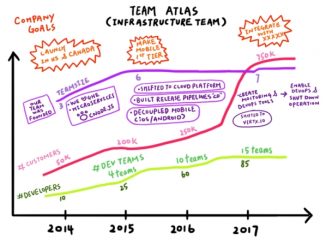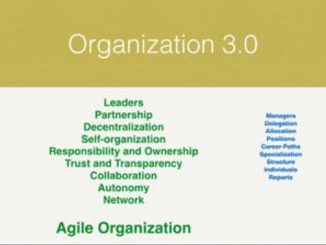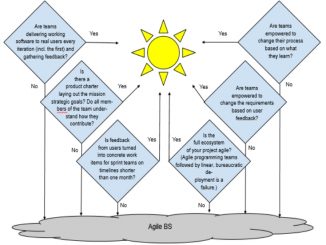Articles on Scrum and Agile Project Management
Agile and documentation are not two words that are often associated in articles or blog posts. Scrum teams have however to find alternate ways to spread the knowledge among their member. In this article, Viktor Cessan explains how he uses an exercise named History Lines to share knowledge in Agile teams.
How can you achieve a modern Agile organization? Starting from the description of the version 1.0 and 2.0 of organizations, Zuzi Šochová explains how to transition to a new Agile work organization that relies team and communication more than on individuals.
Confessions of a serial product owner is a short guide to a business person aiming for becoming an excellent product owner in Agile and Scrum projects. It was written in 2009 and is based on the personal experience of Anna Forss.
Shifting responsibilities from a “command and control” organization towards self-organized teams is not easy. In her article “Managing Product Teams for Success”, Teresa Torres discusses the challenges that you face when you try manage product teams by outcomes.
When an approach or a technology reach the hype level, then every IT solutions provider include it in the description of what it offers. This is today the case for Agile and Scrum in software development. This is why the Defense Innovation Board (DIB) has worked on a document to help US Department of Defense (DoD) agencies to detect Agile bullshit.
The Product Owner is a key component of Scrum teams as the role a major influence on software development projects. It is however not always possible for the Agile team to get access to a full-time qualified Product Owner. This is why Marcelo Leonetti discusses in this article some situations where a Product Owner proxy could help Scrum teams solve some problems.
How do you assess your skills as an Agile coach? An Agile coach herself, Karen Greaves proposes to define the coaching activity using 5 areas and 15 different items, a perspective that could naturally be adapted to your own context. This simple tool allows the coaches to reflect about their work and plan improvements.







